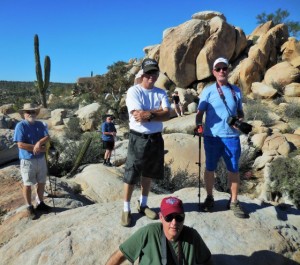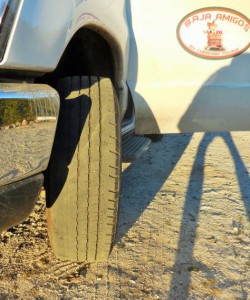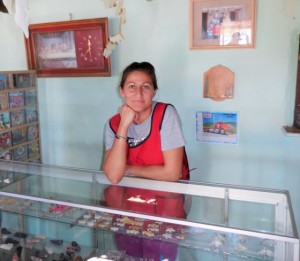
February 11, 2015 – The last couple of days have not been without adventure, even more than planned. We met Roland & Janice at the Calimax on Hwy 1 as planned on our way to Fidel’s the gang was happy to welcome them back into the Caravan. Our drive on Hwy 1 seemed to have less traffic although those on the road seemed to take more risks than usual which prove for more than enough excitement at the front. We all arrived intact at Fidel’s, which was the good news. Shortly before arriving when we were fueling up, Roland found another flat tire on his “A”. When we arrived I asked Fidel to call his tire guy and got that repair rolling. Shortly after that Bob & Patsy were stuck in the sand attempting to park, so out came the tow ropes and I enlisted Bob & Diane’s 4 wheel drive truck for assistance. Eventually we got everything sorted out and the big 5th wheel was parked for the night. The tire guy showed up and removed both driver’s rear wheels for inspection. It was determined the best course of action was a replacement tire, so he would be back the next day. About 4 pm we started the fire for the hot dog roast. Later Roland played a few tunes and sang some songs on his guitar and harmonica, very enjoyable for sure.

The next day we said goodbye to Roland & Janice, confident their repair would soon e done and they would catch up. We saw the tire go by on the way out of the campground and yes he had a replacement tire mounted ready to go. When we got to the Military Checkpoint before descending to El Rosario we called and they were on their way just leaving Fidel’s. They caught up at our Onyx Shop body break 34 Km or about 20 miles before our destination for the day, Rancho Santa Inez in Catavina. We arrived at our scheduled time, had a good lunch break then set out for our visit to the Cave Paintings. Later most went for dinner cooked by Matilda and California Bob built a fire. Myself I went with chicken soup cooked by Lisa and turned in early, I have been trying to shake a cold for a few days now.

Day 3 of the tour started with me realizing that my driver’s side front tire needed replacing as clearly the alignment was out. The good news is across the street from the Guerrero Negro grocery store was a great tire shop. For under $200 US and less than an hour I was the proud owner of a brand new tire and got a new tire with an alignment. Later the entire gang went for dinner, lots of seafood, I had the Filet Mignon and Shrimp. This morning everyone is heading out to watch the whales, the weaher is spectacular, sunshine and no wind, although it may be a little foggy at first light.

On their return we head off to San Ignacio for yet more fun & adventure.

Did you know?
A new Whale Museum (Museo de La Ballena) has recently opened in La Paz, Baja California Sur, Mexico. Remember the tale about Jonah? Well if he had spent those three days and nights inside the belly of a blue whale (found in the Sea of Cortez), it was probably some of the most spacious accommodation he’d ever encountered. When you consider that the heart of the blue whale is the size of a Mini Cooper, that the arteries are so large a human can swim through them, and that the whole body is so long that an NBA basketball court can scarcely contain it, then you can see how a suite the Ritz might seem a little cramped by comparison. This is an excellent new attraction for tourists and locals alike where you can take a leisurely stroll alongside the complete skeleton of a blue whale, one of only two blue whale skeletons on display in all of Latin America and the only one in Mexico.

The Whale Museum and Marine Sciences building is currently home to 33 whale skeletons, all of which are from Baja California Sur, including many from the Bay of La Paz and the waters around Isla Espiritu Santo. I must say for a place full of bones it feels remark ably alive and this is due to the vision of the museum’s executive director, Francisco J. Gomez who, naturally enough, is also an artist? Seeing the museum, you’ll see why other natural history museums around the world are likely now probably scrambling to get multi-talented artists on board as well.

The two main themes of the museum are whale evolution and Odontocetes (toothed whales) and the exhibits for the toothed whales are divided into dolphins, beaked whales, sperm whales and porpoises. (The blue whale, a baleen whale, has her own space outside.) Francisco actually drew the entire whale evolution display on a special surface in the museum, and it strikes just the right balance between fun, fact, art and science. For each of the four main toothed whale exhibits, there is a combination of: (a) skeletons, all personally found, processed and reconstructed by Francisco and his team (b) sculptures, all made by Francisco and his team out of fiberglass, foam, plastic and/or wood and (c) videos, all shot, edited and produced by Francisco and his team. The overall effect is wonderful, with each exhibit visually striking, intellectually engaging, simply an experience you will remember and enjoy.

Senor Gomez is a self-taught artist, but his oceanography love came from the Mexican Navy, where he spent five years engaged in research trips around Veracruz, Mexico, often with visiting professors from places such as Texas A&M and the University of Miami. Love, of the marital kind, then lead him to La Paz in 1992, where he initially worked in radio and communications. He connected with the old whale museum of La Paz in 1996 when they asked local artists to donate works for an auction. Both parties enjoyed the association so much that he was asked to join the board in 1999. He readily agreed and has been there ever since. After a career in the fishing industry was destroyed in 2007 by the US embargo of Mexican tuna, Francisco finally became an artist full time. Francisco then enrolled in English and film classes, bought an underwater video camera and a new passion was born.

Like all great institutions of its kind, the Whale Museum on La Paz deals in dead things so that we may all better understand the world of living things around us. When Francisco and his team find a new whale body or skeleton, it takes them at least one year to prepare it for exhibition. they not only have to undertake the arduous task of removing the flesh and cleaning the bones, but they also work closely with local scientific institutions attached to the autonomous University of Baja California Sur and CIBNOR to understand as much about the mammal’s life as they can, as well as what caused it’s death. This means taking DNA samples, checking for heavy metals, simply any and everything that provides clues to the whale’s health, habits and habitats. And to make sure that the children and students of Baja California Sur have easy access to this great cache of information related to their natural patrimony, Francisco just bought a school bus to transport them to and from the museum from points all across the state.

Francisco Gomez doesn’t want to just bring visitors inside the museum’s gates-he really wants them to explore the living world of whales as well. To that end the museum is buying a boat for oceanographic trips that will allow non-scientists and non-researchers to conduct their own whale research in the Sea of Cortez alongside established scientists from around the globe. He wants people like the biblical Jonah, non-scientists but with a clear connection to whales, to be able to do their own research to answer potentially critically important questions like: Do whales chew? Do whale stomachs produce gastric acid? Does oxygen get into whale stomachs via the blowhole? The good news is that you don’t have to head into the belly of a whale-or even onto a research vessel-to find out. Just head to the Whale Museum in La Paz, and marvel in the wonders of the world of the whale.



